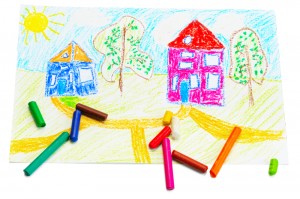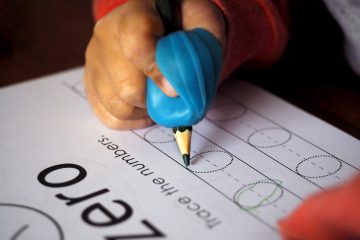Dwindling budgets have forced art programs across the country out of our public school systems, much to the dismay of many teachers and educators who have long respected art as not just a second recess (as some mistakenly perceive it), but as a key part of a child’s schooling. We know that the arts can help students develop critical thinking skills, special intelligence, and of course, creativity, but did you know that art can also enhance literacy? Here’s how:

Motor Skills
We might like to think that our budding writers were born with a pencil in their hands, but the truth it that the vast majority of children wield a crayon long before wrapping their little fingers around a writing utensil. We smile at their works of art and proudly display them on our refrigerators, but what we may not realize is just how much learning and growing is happening behind the scenes. Every time a child scribbles a new doodle, he’s honing the fine motor skills that he’ll later need to write letters, words, and eventually lengthier texts!
Retention
Writing is just one part of the equation though. Art can actually help with reading comprehension and vocabulary acquisition as well. When children are asked to illustrate a scene from a story or create symbols to associate with new vocabulary words, they are engaging with the content in a meaningful way and therefore, are much more likely to remember what they’ve read.
Ingenuity
As kids become more proficient in reading and writing, teachers begin to push them to be more creative. Thinking of new ideas can be tough, however. Just ask anyone who has ever suffered from writer’s block! Art creates a different venue for self-expression, one that can foster new ideas and perspectives that can then be applied to creative writing assignments.
Although we should all do our part to advocate for art in our children’s schools, if your kid’s art program has been cut, there are still things you can do to encourage art in your own home. Next time your child wants to tell you about the story she read at school, give her a crayon or marker and ask her to draw you the story instead. Early Childhood NEWS also reports that drawing pictures after reading a story can also motivate children to read more!
Of course, I couldn’t end this post without giving credit where credit is due. I am convinced that elementary school teachers are among the most creative people on the planet, and you can rest assured that even if your child doesn’t get an hour of dedicated art instruction every day, their teacher is likely giving her plenty of opportunities for artistic expression in the classroom.


